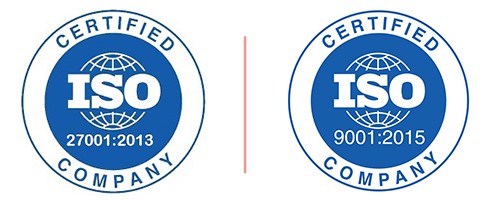- +81-5050505761
- [email protected]
The global connected logistics market size was US$ 24799.6 million in 2021. The global connected logistics market size is forecast to reach US$ 58476.1 million by 2030, growing at a compound annual growth rate (CAGR) of 10% during the forecast period from 2022 to 2030.
As part of the Internet of Things, connected logistics refers to a number of interconnected devices that can boost the operational efficiency of many logistics processes. Monitoring, warehouse management, and tracking transportation fleet management are only some of the operations that these technologies support. These technologies also assist in dispatching, financial transactions, and order processing. In addition, connected logistics facilitates communication between parties even if they are not directly connected.
Factors Influencing Market Growth
Impact Analysis of COVID-19
Due to the COVID-19 pandemic, freight availability in the connected logistic sector has fallen sharply. As a result of restrictions on the production of non-essential goods and a shortage of drivers, and the consequent spike in truck rentals and air freight prices. In the early stage, customers begin shipping more goods in anticipation of better business conditions. As the economy begins to slow, logistics demand decreases rapidly. Additionally, logistics plays a crucial role in the economy as it is a primary indicator of GDP and unemployment. A gradual lift-off of the lockdown is likely to dampen the recovery in business activity, which will lead to sharp demand declines in the logistics industry, including warehousing, during the forecast period.
Regional Insights
The Asia Pacific region is forecast to grow at the fastest rate during the forecast period. As a result of increasing opportunities in rural areas, countries like China and India are likely to have the highest share of the connected logistics industry. Additionally, the increase in population and the number of manufacturers in the countries have impacted the connected logistics market growth in the region. Since logistics work better with the use of advanced tools, the region has introduced these tools in the market, thereby bringing significant growth to the connected logistics market.
Leading Competitors
The leading prominent companies profiled in the global connected logistics market are:
Scope of the Report
The global connected logistics market segmentation focuses on Technology, Devices, and Region.
Segmentation based on Technology
Segmentation based on Devices
Segmentation based on Region
Table of Contents
1 INTRODUCTION OF GLOBAL CONNECTED LOGISTICS MARKET
1.1 Overview of the Market
1.2 Scope of Report
1.3 Assumptions
2 EXECUTIVE SUMMARY
3 RESEARCH METHODOLOGY OF VERIFIED MARKET RESEARCH
3.1 Data Mining
3.2 Validation
3.3 Primary Interviews
3.4 List of Data Sources
4 GLOBAL CONNECTED LOGISTICS MARKET OUTLOOK
4.1 Overview
4.2 Market Dynamics
4.2.1 Drivers
4.2.2 Restraints
4.2.3 Opportunities
4.3 Porters Five Force Model
4.4 Value Chain Analysis
4.5 Regulatory Framework
5 GLOBAL CONNECTED LOGISTICS MARKET , BY TECHNOLOGY
5.1 Overview
5.2 Wi-Fi
5.3 Bluetooth
5.4 Zigbee
5.5 NFC
5.6 Cellular
5.7 Satellite
6 GLOBAL CONNECTED LOGISTICS MARKET , BY DEVICES
6.1 Overview
6.2 Gateways
6.3 Sensor Nodes
6.4 RFID Tags
7 GLOBAL CONNECTED LOGISTICS MARKET, BY GEOGRAPHY
7.1 Overview
7.2 North America
7.2.1 U.S.
7.2.2 Canada
7.2.3 Mexico
7.3 Europe
7.3.1 Germany
7.3.2 U.K.
7.3.3 France
7.3.4 Rest of Europe
7.4 Asia Pacific
7.4.1 China
7.4.2 Japan
7.4.3 India
7.4.4 Rest of Asia Pacific
7.5 Latin America
7.5.1 Brazil
7.5.2 Argentina
7.6 Rest of the World
8 GLOBAL CONNECTED LOGISTICS MARKET COMPETITIVE LANDSCAPE
8.1 Overview
8.2 Company Market Share
8.3 Vendor Landscape
8.4 Key Development Strategies
9 COMPANY PROFILES
9.1 SAP
9.1.1 Overview
9.1.2 Financial Performance
9.1.3 Product Outlook
9.1.4 Key Developments
9.2 THINGWORX
9.2.1 Overview
9.2.2 Financial Performance
9.2.3 Product Outlook
9.2.4 Key Developments
9.3 AT&T INC.
9.3.1 Overview
9.3.2 Financial Performance
9.3.3 Product Outlook
9.3.4 Key Developments
9.4 SECURERF
9.4.1 Overview
9.4.2 Financial Performance
9.4.3 Product Outlook
9.4.4 Key Developments
9.5 CISCO SYSTEMS, INC.
9.5.1 Overview
9.5.2 Financial Performance
9.5.3 Product Outlook
9.5.4 Key Developments
9.6 ZEBRA TECHNOLOGIES
9.6.1 Overview
9.6.2 Financial Performance
9.6.3 Product Outlook
9.6.4 Key Developments
9.7 INTERNATIONAL BUSINESS MACHINES CORPORATION
9.7.1 Overview
9.7.2 Financial Performance
9.7.3 Product Outlook
9.7.4 Key Developments
9.8 GT NEXUS
9.8.1 Overview
9.8.2 Financial Performance
9.8.3 Product Outlook
9.8.4 Key Developments
9.9 EUROTECH S.P.A.
9.9.1 Overview
9.9.2 Financial Performance
9.9.3 Product Outlook
9.9.4 Key Developments
9.10 ORACLE
9.10.1 Overview
9.10.2 Financial Performance
9.10.3 Product Outlook
9.10.4 Key Developments
01
お客様のニーズに合わせてレポートをカスタマイズ可能
02
ベテランの市場調査員による専門的な分析
03
安全で簡単に利用できるオンライン決済方法
04
お客様のご要望に応じて、特定の章を購入することができます。
05
すべてのレポートに専門的な日本語翻訳を提供
06
包括的でわかりやすいレポートを迅速にお届けします。
07
購入後も継続的なサポートとアップデートが受けられます。

We Accept

Copyright ©2022 All rights reserved